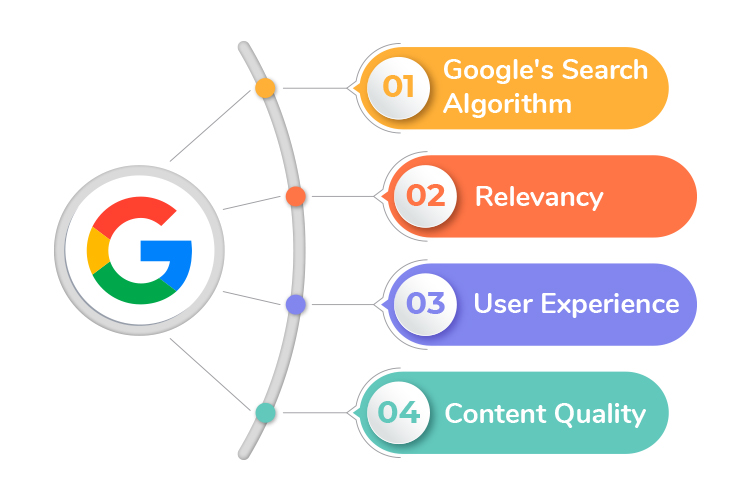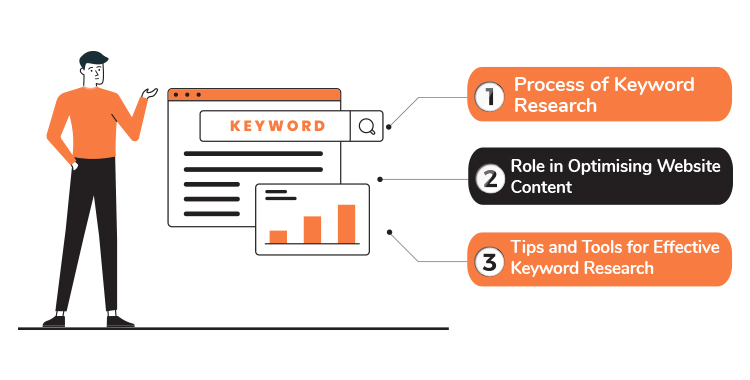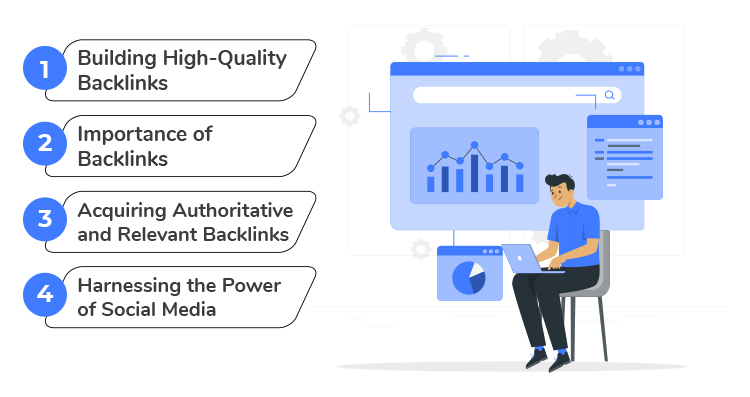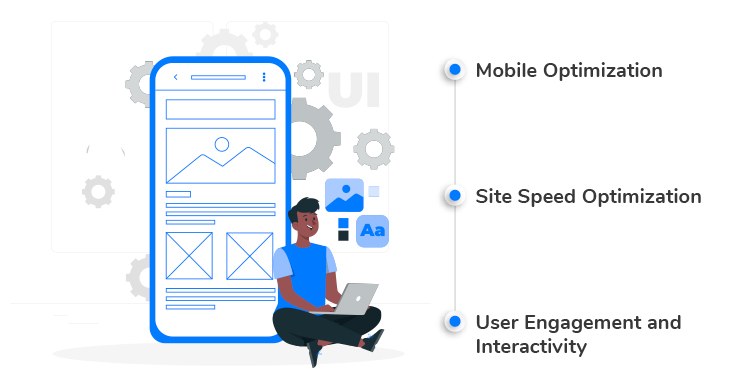How To Increase Website Hits From Google

In today’s digital landscape, the number of website hits from Google can significantly impact online success. As the world’s most popular search engine, Google plays a pivotal role in driving organic traffic to websites.
The sheer volume of users relying on Google to find information, products, and services makes it a crucial platform for businesses and individuals alike.
In this blog, we will delve into the strategies and techniques that can help you increase your website hits from Google, ultimately boosting your online visibility, attracting more visitors, and achieving your goals. Get ready for an exciting and informative exploration of proven strategies that can propel your website to new heights.
The Importance of Website Hits from Google
Website hits from Google hold immense value for businesses and individuals seeking online success. By understanding the importance of these factors, you can better appreciate the need for effective strategies to increase your website hits from Google.
The Significance of Organic Traffic:
Organic traffic refers to the visitors who arrive at your website through unpaid search results. Unlike paid advertisements, organic traffic is driven by users actively searching for relevant information, products, or services.
This type of traffic is highly valuable as it indicates genuine interest and provides the potential for higher engagement and conversions.
The Role of Google in Driving Website Visitors:
Google dominates the search engine market, with billions of searches conducted every day. It acts as a gateway, connecting users with the most relevant and valuable content based on their search queries.
Appearing prominently in Google search results can generate a steady stream of visitors to your website, increasing brand exposure, attracting potential customers, and driving business growth.
Throughout this blog, we will explore effective strategies and techniques to increase your website hits from Google. We will uncover the inner workings of Google’s search algorithm, delve into on-page and off-page optimization techniques, emphasise the importance of user experience, and provide practical tips for achieving higher search rankings.
Let’s dive in!
Understanding the Google Search Landscape

Understanding how Google search works and conducting thorough keyword research are essential components of optimising your website for increased visibility in Google search results.
How Google Search Works:

Google’s search algorithm is the engine that powers its search results. It uses a complex system of ranking factors to determine the most relevant and useful content for a given search query. To optimise your website for increased visibility on Google, it’s crucial to understand the basics of how Google search works.
- Google’s Search Algorithm: Google’s algorithm analyses numerous factors to determine search rankings. These factors include relevancy, user experience, content quality, and many others. By aligning your website with these ranking factors, you can improve your chances of appearing higher in search results.
- Relevancy: Google aims to deliver search results that closely match a user’s search intent. This means that your website’s content should be highly relevant to the keywords and topics you want to rank for. Creating well-focused, targeted content that answers users’ queries is key to improving relevancy.
- User Experience: Google prioritises websites that provide a positive user experience. Factors such as site speed, mobile-friendliness, ease of navigation, and overall usability play a significant role in determining search rankings. Optimising your website for a seamless and user-friendly experience is essential.
- Content Quality: High-quality content that meets users’ needs and provides valuable information is highly regarded by Google. Creating in-depth, well-researched, and engaging content enhances your chances of ranking higher. Aim to be a reliable source of information in your niche.
Keyword Research:

Keyword research is a fundamental aspect of optimising website content for Google search. By understanding the process and leveraging effective techniques, you can uncover the keywords that your target audience is searching for and strategically incorporate them into your content.
- Process of Keyword Research: Keyword research involves identifying the words and phrases users enter into search engines when looking for information related to your website. Start by brainstorming potential keywords, using tools like Google Keyword Planner, SEMrush, or Moz Keyword Explorer to expand your list, and analysing search volume and competition levels.
- Role in Optimising Website Content: Incorporating relevant keywords into your website’s content helps search engines understand the context and relevance of your pages. By strategically placing keywords in titles, headings, meta tags, and throughout your content, you can improve your website’s visibility in search results.
- Tips and Tools for Effective Keyword Research: When conducting keyword research, consider long-tail keywords (more specific and longer phrases) that have lower competition but higher intent. Look for keywords with a balance of search volume and competition. Experiment with variations and synonyms to broaden your keyword targeting. Utilise keyword research tools to analyse metrics, identify related keywords, and discover keyword opportunities specific to your industry.
On-Page Optimization Techniques

On-page optimization techniques play a crucial role in improving your website’s visibility and relevance in Google’s search results. By optimising various on-page elements, you can enhance the user experience, align your content with search intent, and increase your chances of ranking higher.
Optimising Website Structure:
The structure of your website plays a significant role in user engagement and search engine crawlers’ ability to understand and index your content. Here are some key points to consider:
- User-Friendly Website Navigation: Design intuitive navigation menus and logical site architecture to ensure visitors can easily find the information they seek. Clear and organised menus, breadcrumbs, and site maps contribute to a positive user experience.
- Logical Hierarchy: Arrange your website’s content in a logical hierarchy using headings and subheadings. This not only helps users navigate your site but also allows search engines to understand the context and relevance of each section.
- Organising Content: Group related content into categories and use internal linking to establish connections between relevant pages. This improves both user navigation and search engine crawlability.
- Optimising URLs: Craft clean, descriptive, and keyword-rich URLs that accurately reflect the content of each page. Avoid lengthy, generic URLs and utilise hyphens to separate words for improved readability.
Crafting Compelling Meta Tags:
Meta tags, including meta titles and meta descriptions, provide concise summaries of your web pages in search engine results. Here’s what you should consider:
- Importance of Meta Titles: Meta titles are the clickable headlines displayed in search results. Craft compelling and concise titles that accurately represent the content of the page, incorporate relevant keywords, and entice users to click through to your website.
- Engaging Meta Descriptions: Meta descriptions provide a brief overview of the page’s content. Write persuasive descriptions that encourage users to click by highlighting the value and relevance of your page. Incorporate keywords naturally while maintaining readability.
Creating High-Quality Content:
Quality content is the foundation of a successful website. Focus on creating content that provides value, answers users’ questions, and engages your audience. Here’s what you should keep in mind:
- Informative and Valuable Content: Develop content that educates, informs, and offers solutions to users’ problems. Strive to become a go-to resource in your niche by providing unique insights and addressing your audience’s needs.
- Shareable Content: Craft content that is share-worthy and encourages social sharing. Engaging, visually appealing, and actionable content has a higher likelihood of being shared, increasing its reach and driving more traffic to your website.
- Optimising with Keywords: Incorporate relevant keywords naturally into your content to improve its visibility in search results. Aim for a balance between keyword optimization and maintaining readability and coherence.
- Formatting Techniques: Use appropriate headings, bullet points, and formatting techniques to enhance the readability and scannability of your content. Break up long paragraphs, use subheadings to organise information, and include visuals to make your content more engaging.
Off-Page Optimization Strategies

Off-page optimization strategies focus on factors outside of your website that can impact its visibility and authority in search engine rankings. By implementing these strategies, you can enhance your website’s reputation and increase its chances of ranking higher on Google.
Building High-Quality Backlinks:
Backlinks, which are links from other websites to yours, are a crucial element in Google’s ranking algorithm. Here’s what you need to know:
-
Importance of Backlinks:
Backlinks act as votes of confidence and credibility for your website. They signal to search engines that your content is valuable and worthy of recognition. The more high-quality and authoritative websites that link to your site, the better your chances of ranking higher.
-
Acquiring Authoritative and Relevant Backlinks:
Focus on building backlinks from reputable websites within your industry or niche.
Here are some strategies to consider:
- Guest blogging: Contribute high-quality articles to authoritative websites in your industry, including a link back to your site in the author bio or within the content.
- Content outreach: Reach out to relevant website owners or bloggers and propose collaborations or content partnerships that can result in backlinks.
- Online directories and listings: Submit your website to reputable directories and listings related to your industry.
- Influencer partnerships: Collaborate with influencers or thought leaders in your niche to gain exposure and acquire backlinks from their platforms.
Harnessing the Power of Social Media:
Social media platforms offer immense opportunities for driving website traffic and increasing your visibility on Google. Here’s how to leverage social media effectively:
- Impact of Social Media on Website Hits: Engaging with your audience on social media platforms not only helps increase brand awareness but also encourages sharing and amplification of your content. Social media signals, such as likes, shares, and comments, can indirectly influence search rankings.
- Strategies for Social Media Traffic: Consider the following strategies to drive traffic from social media platforms to your website:
- Share valuable content: Regularly share your blog posts, articles, and other relevant content on social media to attract users to visit your website.
- Engage with your audience: Respond to comments, messages, and mentions to build a community and encourage interaction.
- Use compelling visuals: Incorporate eye-catching images, videos, and infographics in your social media posts to capture users’ attention and entice them to click through to your website.
- Utilise social media advertising: Leverage paid social media campaigns to target specific audiences and drive traffic to your website.
User Experience and Technical Optimization

User experience and technical optimization are crucial aspects of website development and play a significant role in attracting and retaining visitors. By prioritising user experience and implementing technical optimization strategies, you can enhance your website’s performance, engage users, and improve search engine rankings.
Mobile Optimization:
With the increasing use of mobile devices, optimising your website for mobile users is crucial for both user experience and search engine rankings. Consider the following
Importance of Mobile-Friendly Websites:
Google prioritises mobile-friendly websites in its search results, as it aims to deliver the best user experience across different devices. A responsive design that adapts to various screen sizes and provides a seamless experience is essential.
Tips for Mobile Optimization:
- Use responsive design to adapt your website to different screen sizes.
- Simplify navigation to make it easy for mobile users to find information.
- Optimise page load speed by compressing images and leveraging caching techniques.
Site Speed Optimization:
Fast-loading websites are essential for user satisfaction and improved search rankings. Apply these techniques:
Impact of Site Speed:
Slow-loading websites can lead to higher bounce rates and decreased user satisfaction. Google considers page load speed as a ranking factor, favouring faster websites in search results.
Techniques for Improving Website Loading Speed:
- Optimise image sizes without compromising quality.
- Enable caching to store static resources on users’ devices.
- Minify code by removing unnecessary characters and spaces.
- Utilise content delivery networks (CDNs) for global distribution.
User Engagement and Interactivity:
Engaging users through interactive elements enhances their experience and encourages longer visits. Consider the following examples:
Significance of User Engagement:
Websites that encourage user engagement, such as comments, social sharing, and interactive features, can lead to longer time spent on the site and increased repeat visits.
Examples of Interactive Elements:
- Enable comment sections for discussions.
- Incorporate social sharing buttons for easy content sharing.
- Use quizzes, surveys, or polls to encourage user participation.
- Enhance user experience with videos, interactive infographics, and multimedia elements.
By focusing on mobile optimization, site speed optimization, and user engagement, you can improve your website’s performance, attract more organic traffic, and provide a satisfying experience for your visitors.
Conclusion
we’ve explored a range of strategies to increase your website hits from Google. By implementing the insights and tips provided, you can unlock Google’s potential and attract a steady stream of organic traffic.
Remember, website optimization is an ongoing process, so stay up to date with industry trends and adapt your strategies accordingly. Get ready to take your website’s visibility on Google to new heights and enjoy the benefits of increased website hits.












